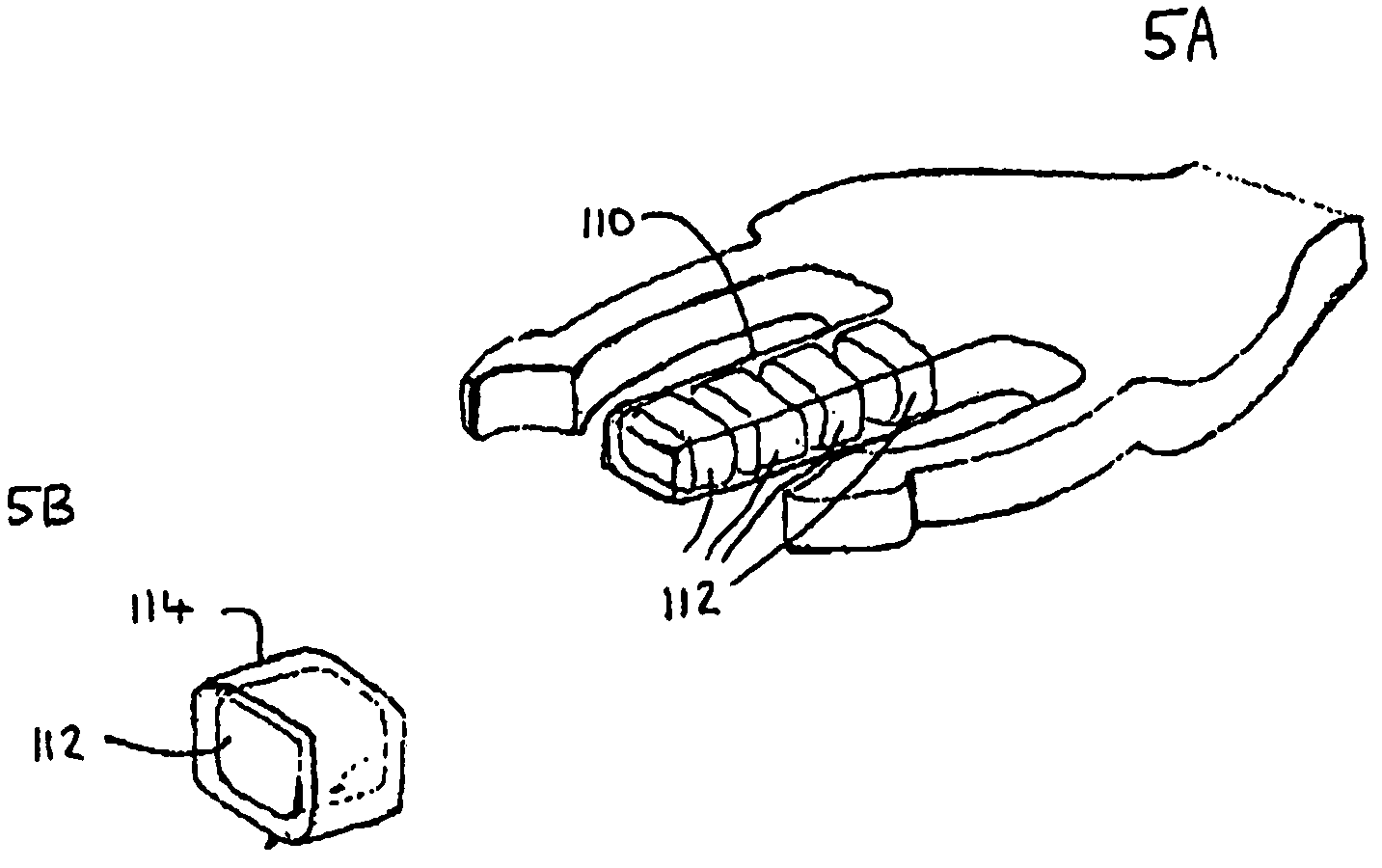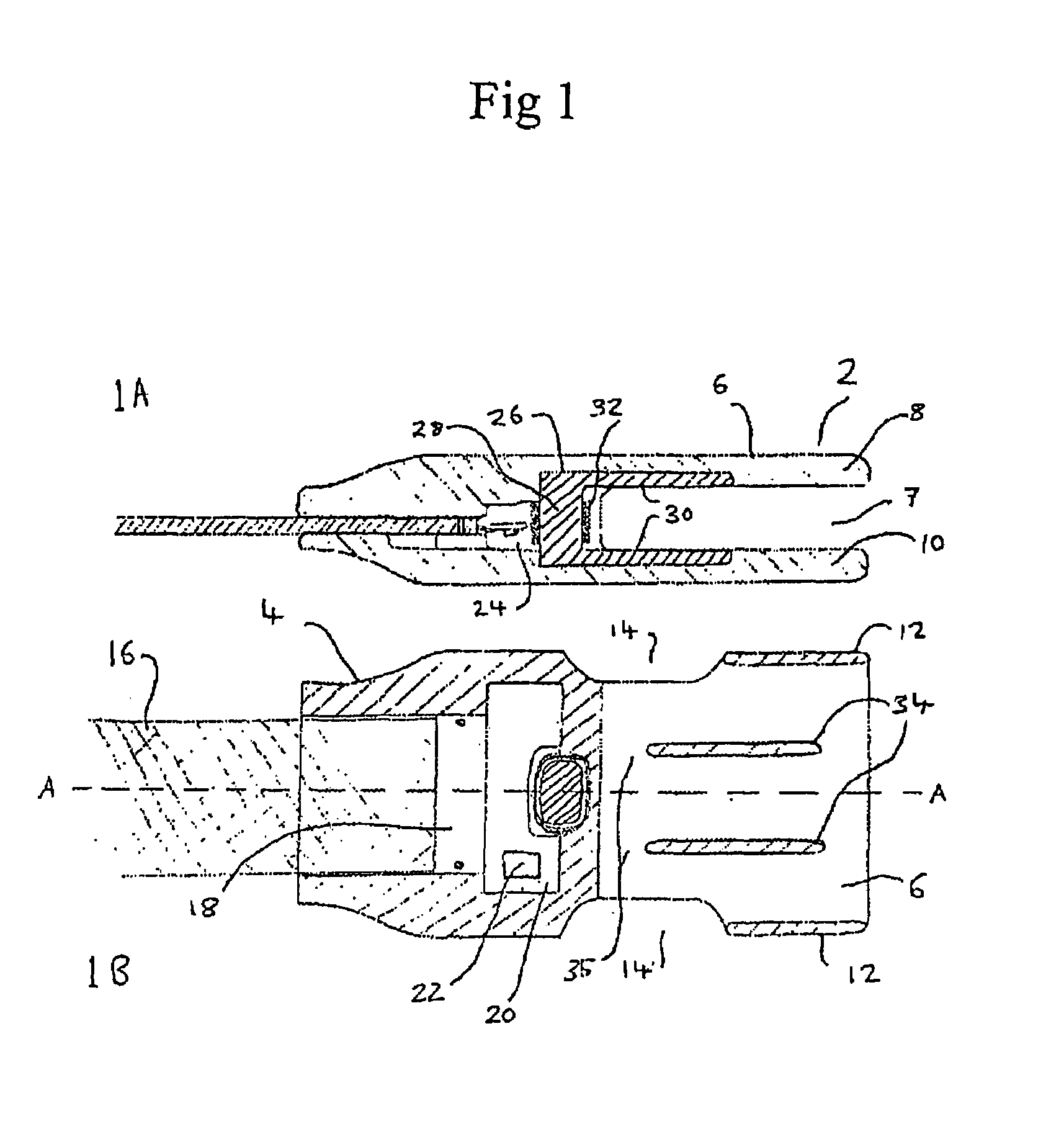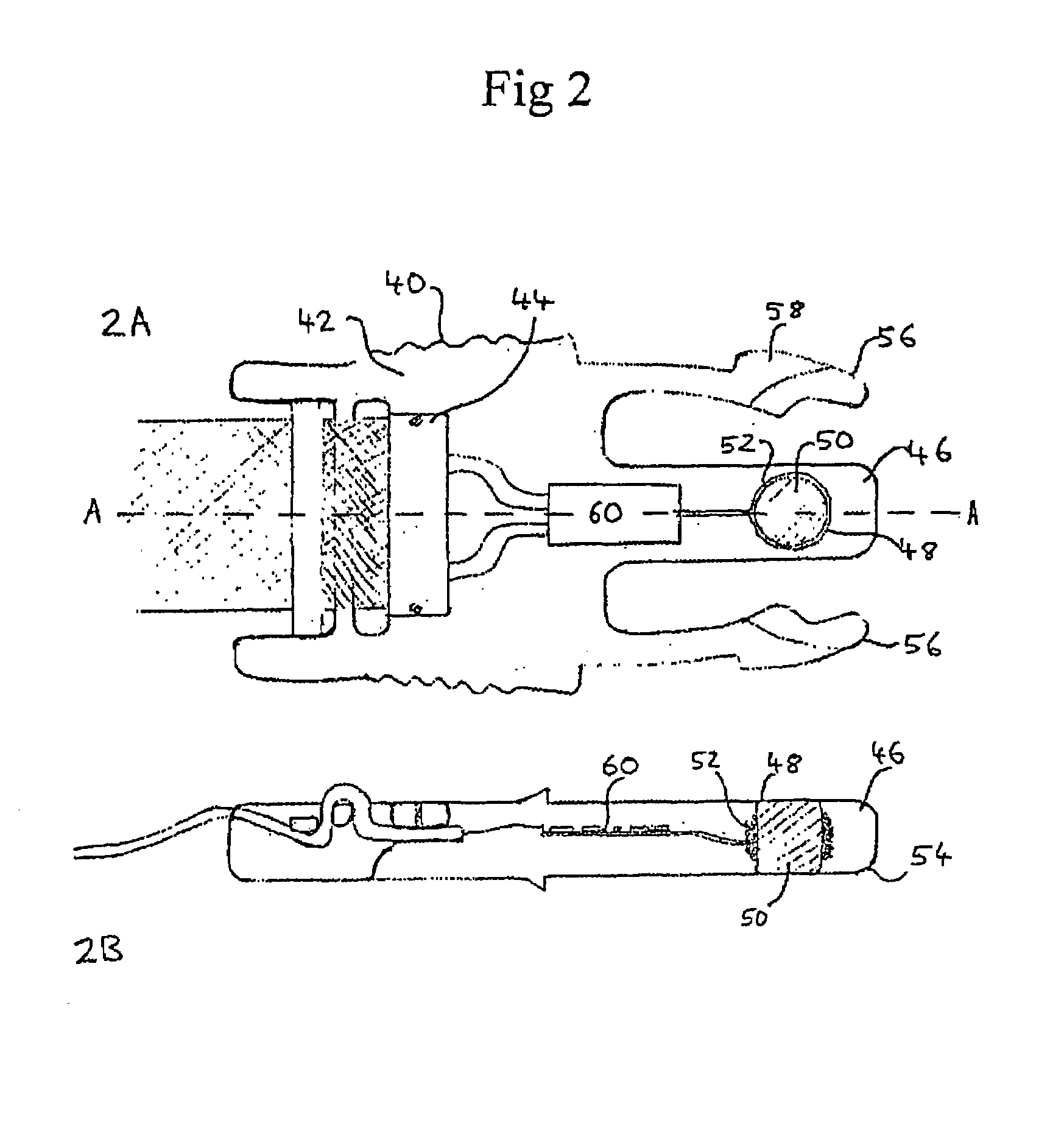Electrical connector
a technology of electrical connectors and connectors, applied in the direction of coupling device connections, inductances, garments, etc., can solve the problems of reducing the lifespan of connectors and/or equipment, affecting the service life of connectors, and affecting the service life of equipment, so as to achieve the effect of rapid and precise opening and closing of connectors
- Summary
- Abstract
- Description
- Claims
- Application Information
AI Technical Summary
Benefits of technology
Problems solved by technology
Method used
Image
Examples
Embodiment Construction
[0093]FIG. 1 shows the socket portion 2 of a contact-less connector of the present invention. The connector has a structure similar to that of a squeeze-to-release clip or buckle commonly found on rucksacks (see tongue portion 40 in FIG. 2). The socket portion has a base 4 and walls 6 extending from the base to define a socket 7. The socket portion has a flat profile that makes it more comfortable when worn or carried by an individual. The socket walls include opposing upper 8 and lower 10 walls that extend from the base and two opposing side walls 12 which extend from the mouth of the socket to about midway along the length of the socket. This arrangement provides a gap 14 in each side of the socket between the base 4 and side walls 12. These gaps act as detents that co-operate with latches 56 on the tongue portion (see FIG. 2). The detents may also, for example, be provided by apertures or openings in the socket walls or, for example, depressions in or projections on a surface of ...
PUM
| Property | Measurement | Unit |
|---|---|---|
| frequencies | aaaaa | aaaaa |
| frequencies | aaaaa | aaaaa |
| frequency | aaaaa | aaaaa |
Abstract
Description
Claims
Application Information
 Login to View More
Login to View More - R&D
- Intellectual Property
- Life Sciences
- Materials
- Tech Scout
- Unparalleled Data Quality
- Higher Quality Content
- 60% Fewer Hallucinations
Browse by: Latest US Patents, China's latest patents, Technical Efficacy Thesaurus, Application Domain, Technology Topic, Popular Technical Reports.
© 2025 PatSnap. All rights reserved.Legal|Privacy policy|Modern Slavery Act Transparency Statement|Sitemap|About US| Contact US: help@patsnap.com



